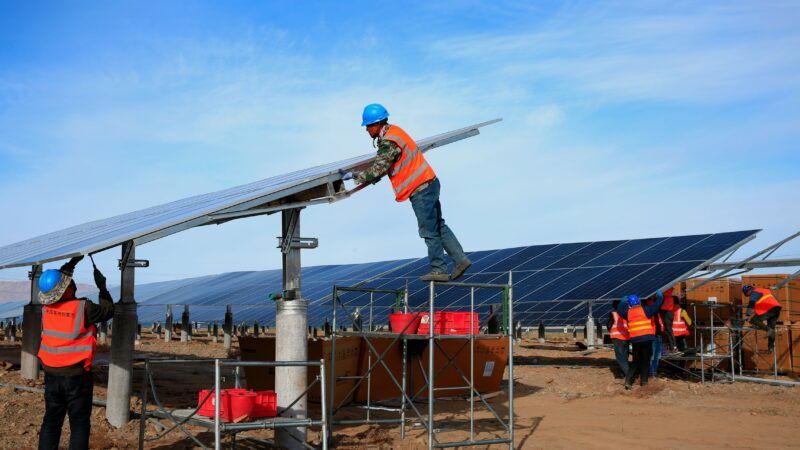Subsidies Won't Fix the Energy Industry
Ending subsidies can help cut emissions and energy costs.

Having taken back the House, Republicans say they want to revamp domestic energy policy. Rep. Cathy McMorris Rodgers (R–Wash.), the ranking member on the House Committee on Energy & Commerce and its likely chair next year, has said the party wants "workable solutions to make energy cleaner, reduce emissions, prioritize energy security, and keep energy costs low."
Politicians and bureaucrats have been singing this tune for decades. One thing they've done wrong is waste billions of dollars on energy subsidies. Instead of fueling innovation, subsidies have unfairly cherry-picked certain energy sources and technologies, causing both economic and environmental inefficiencies.
In 2017, the consulting firm Management Information Services, Inc. analyzed federal energy expenditures from 1950 to 2016. It found that nonhydro renewable energies, such as solar and wind energy, were the largest beneficiaries of such assistance. Solar and wind received $158 billion, or 16 percent, of federal energy subsidies, mostly through tax credits. By contrast, the nuclear industry received less than half of that, mostly for research and development purposes.
My point isn't that nuclear should get more government money. None of these industries should be getting this money. If tax credits are given to a specific technology, other products may fail because they did not receive enough capital. These programs then spend their own resources to lobby to expand the subsidy supply. Better to end the handouts and let these companies compete in the marketplace.
Besides distorting the market in this way, these boosts have often been costly and wasteful. What's more, they are a vastly inefficient way to reduce carbon emissions. For instance, costs for solar photovoltaic subsidies were as high as $2,100 per ton of carbon dioxide. Other popular measures, such as the electric vehicle (E.V.) tax credit, have historically gone to wealthy consumers who don't need the credit—while overlapping, redundantly, with various other government privileges for E.V.s, including state rebates and other federal mandates.
More problems come into play when such subsidies are distributed to less cost-effective sources, especially when the alternatives do not receive the same government support. If subsidies replace clean sources—for example, wind replacing nuclear—greenhouse emissions will remain unchanged.
Targeted subsidies have also artificially inflated energy prices. If you boost, say, solar energy at the expense of geothermal energy, that drives up the value and cost of solar, while geothermal will be less competitive. As a result, the value of other sources will be depleted and fall out of competitive markets.
Energy subsidies have led to wasteful energy consumption while the government becomes over-leveraged on less efficient power sources and reducing America's energy security. If Congress isn't willing to end energy subsidies entirely, it could still make energy technologies more competitive by simplifying all 44 energy tax provisions. For instance, it could offer tax credits to companies based on what their emissions are, without requiring that they use any specific technologies to hit those targets. Unlike targeted subsidies, such performance-based provisions have historically led to less greenhouse emissions.
Energy subsidies are wasteful at best and cronyist at worst, and they don't even accomplish their stated aims. Policymakers should be removing the obstacles that keep creative entrepreneurs from developing cheaper alternatives, not giving specific products an unfair edge.


Show Comments (79)